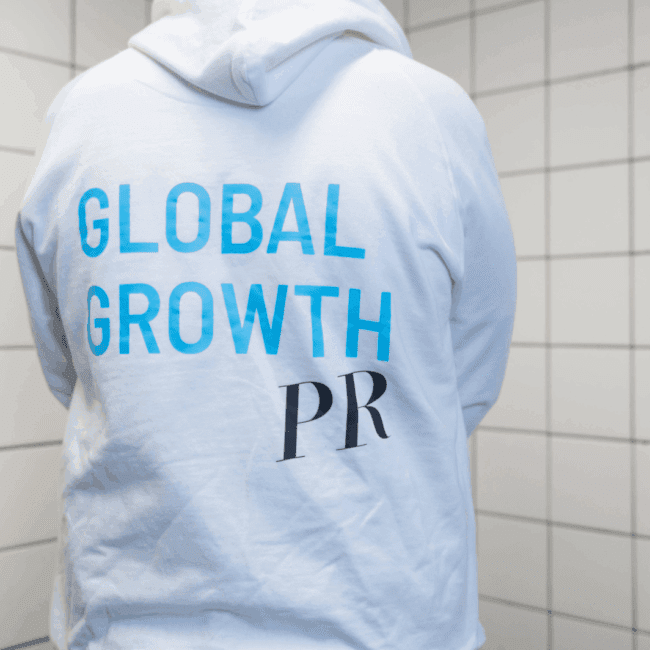One of the fundamental questions that companies should always ask is, “WHY?” Why do we exist? Why are we the people to solve the problem? Why should people care? Answering these questions and structuring your answers to form an easily communicable WHY Statement will get you one step closer to building tighter relationships with your customers, investors, and journalists alike.
Why Does Your Company Exist?
Often when we sit down with a company for the first time, we ask them a question that most of them cannot answer easily.
“How would you describe your company without telling about your product?”
We ask this because it brings out a critical obstacle in the way companies communicate. Too often, we make the mistake of assuming that everyone we speak to already knows us and is looking for what we have to offer.
We’ve seen from experience that the best companies are about more than just what they provide as a product or a service. They have found a way to affect people emotionally and connect with them. These companies are the most effective at communications and are looking to build long-term relationships with people.
At their very core, they believe in something that goes beyond the product and even into the very fabric of humanity. That’s the kind of company whose long-term strategy is based on WHY they do what they do.
Start With WHY To Make Your Company Extraordinary
Let’s rewind. Simon Sinek’s famous Ted talk “Start With Why” set out to establish why some companies achieve extraordinary success while others are a complete flop despite having the same resources available. He answered that companies like Apple start with WHY. They’re not just a computer company that makes better computers than anyone else. They have a deeper purpose. As Sinek puts it, “People don’t buy what you do. They buy why you do it.“
WHY is at the core of your company’s foundation. It guides your company’s vision, which in turn guides your mission and feeds into your values. This influences how you externally communicate with your stakeholders and how people and the media relate to your organization.

Simon Sinek’s Golden Circle
- WHAT: A simple description of your product. Every single company and organization on the planet knows (or should know) precisely WHAT they do. They should also be able to describe their product or service easily.
- HOW: What differentiates you from your competitors? These can be in the forms of UVPs or USPs, but HOWs often explain how you do things differently or better. While not being as obvious as the WHAT statement, most companies might have to think about it for a while, but eventually, you would come up with a few reasons. (Also, if you say you have no competitors, experience tells us that it’s unlikely to be true).
- WHY: This reflects the purpose of your organization and is the most critical element. Saying this, very few people or companies can clearly articulate WHY they do WHAT they do. Money isn’t a reason here; it’s a result. Why does your company wake up in the morning, puts on its figurative hat and go to work every day? Why are you the people to solve the problem? Why does anyone care?
We’ve listed WHAT, HOW, and WHY in this order for a reason. Most companies focus on the first two, and probably wholly ignore the WHY.
Actually, with Sinek’s model, it should be the opposite – WHY should be front and center. Start with your WHY statement and then build out. When you get down to it, your product is just a means to an end. Your WHY is what people will pay attention to and will drive your employees to greatness.

PR and Marketing
Starting with WHY is a method that strongly overlaps with PR and marketing. Building a meaningful WHY statement is one of the critical building blocks of an honest, relevant, and original mission statement, story, and purpose.
To build personalized relationships with your stakeholders – whether it’s with investors, journalists, or people who buy your product/services, your WHY needs to resonate.
WHY-based communication connects with the emotive, non-verbal decision-making areas of your brain, which are also responsible for the feelings of trust and loyalty. It’s an intangible thing – this is why people struggle to put it down on paper.
Nail your WHY and people will see that you’re not just some generic profit margin company – they’ll see you as a company with a purpose. According to Sinek, getting loyal customers is all about attracting the same people who share your company’s fundamental beliefs.
Let’s take Simon Sinek’s paper example:
“We sell paper. We offer the highest quality product at the best possible price. Lower than any of our competitors.”
It’s fine. However, fine doesn’t inspire loyalty, create belief, or encourage any action. We’ve come to accept that this is a standard form of explaining our company and what we do. It does what it says on the tin.
“Our company was founded to help spread ideas. The more ideas that are shared, the greater the likelihood these ideas will have an impact on the world. There are many ways to share ideas; one is the written word. That’s where we come in. We make paper for those words. We make paper for big ideas.”
Feel the difference? Notice I said, “feel.” This is what separates exceptional companies from mediocre ones. Building a strong, easily communicable WHY statement sparks a deep feeling that inspires people to connect with your brand, learn more, buy your products, and evangelize for your company.
Here to help
Finding your WHY is no easy task, and it’s often a lot to chew at the beginning. Getting people to stand up and take notice can be extremely challenging.
If you need some expert advice in discovering your company’s WHY, San Francisco Agency is here to help.
We’ve helped countless organizations find their WHY, which in turn has enabled them to better communicate their honest, relevant, and original stories to their target audiences.
We offer practical and hands-on help to guide your company through the murky waters of finding your WHY with interactive workshops and an experienced team ready to put you through your paces.
To learn more, get in touch.
The writer is San Francisco Agency’s Senior Communications Specialist Tim Gilbert, or like some of us like to call him, Timbonator. After retiring from his acting career, he has excelled in international PR pitching and writing top-notch technological articles and blogs.



